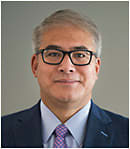Superman, a character faster than a speeding bullet, stronger than a locomotive, and able to leap tall buildings in a single bound, has been captivating audiences since 1938. The story follows Kal-L, a small baby from the planet Krypton who was sent to Earth by his parents as their planet was being destroyed. He was raised by local farmers in Iowa and became a reporter at the Daily Planet in Metropolis. In times of need, this mild-mannered reporter uses his special powers from planet Krypton to become Superman fighting for “truth, justice, and the American way.”
Superman was created by Jerry Siegel (writer) and Joe Shuster (illustrator) and published by Detective Comics, now known as DC Comics. The authors met as students at Glenville High School, which is only a few miles from where I live, where they created the superhero. They named him after Clark Gable, Kent Taylor, and themselves—Clark J. Kent. They were paid $130 for the story and gave the Superman copyright away for free. A life-size statue of Superman can be found at Cleveland Hopkins Airport to commemorate the character’s origins in the area.
In vitreoretinal surgery, the goal is often to achieve smaller, faster, and brighter vitrectomy instrumentation. Smaller instruments help reduce leakage, faster cut rates minimize vitreous traction, and brighter lights enhance visibility during surgery. In this issue we explore new technologies that contribute to our capabilities in the operating room, resembling the qualities of Superman.
Interestingly, the initial portrayal of Superman in a 1933 short story depicted him as a villain with significantly fewer superpowers. Similarly, the notion of smaller, faster, and brighter techniques may not always be ideal. Smaller instruments, while more flexible, can make eye movements more challenging and limit the tools’ capabilities in certain cases. Specifically, curved and/or asymmetrical instruments pose problems when used with smaller gauge cannulas. Additionally, the flow rates are lower with smaller gauges.
While cutting speed is advantageous in reducing traction, it can present challenges in visualizing the presence of vitreous versus cutting water, especially when teaching fellows who rely on feedback from vitreous vibrations. Furthermore, excessive brightness and proximity to the retina can lead to complications. However, these technical issues can be overcome through future advances in vitrectomy systems, combining them with digital microscopes that provide feedback when cutters are incorrectly positioned in the vitreous or too close to the retina. These developments will enable us to embody the capital “S” on our chest, representing our exceptional skills and achievements in vitreoretinal surgery. RP










